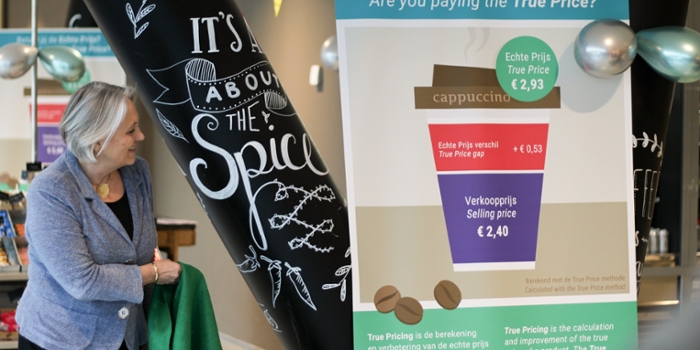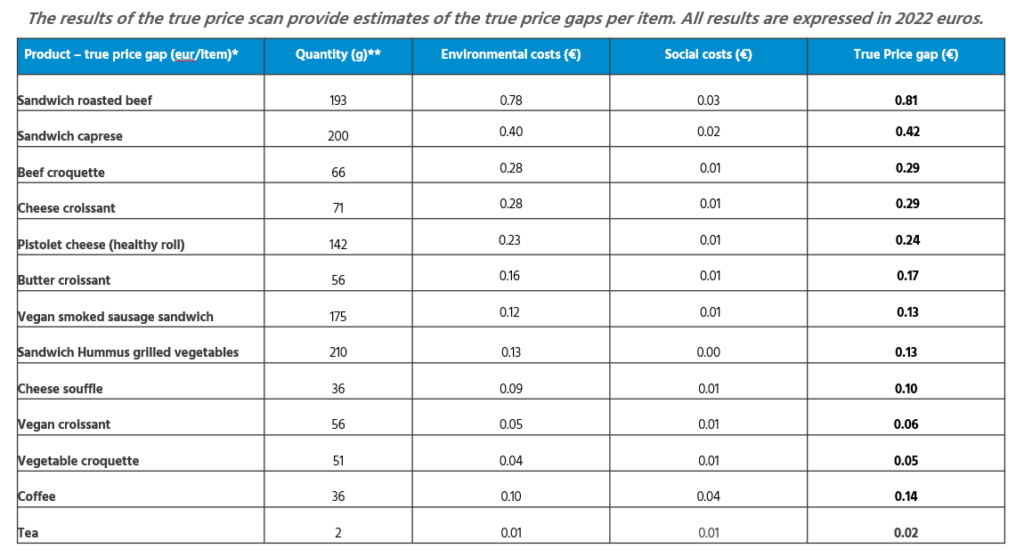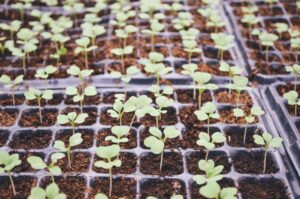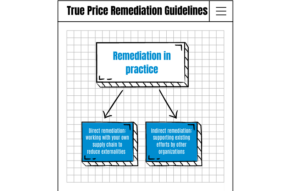Hogeschool van Amsterdam True Price Living Lab
In 2023 True Price and HvA (Hogeschool van Amsterdam or Amsterdam University of Applied Sciences) started a collaboration with the goal of better understanding true pricing as a tool to support more sustainable choices through marketing and consumer behaviour.
From February 26 to mid-June 2024, the company restaurant and espresso bar of the Corry Tendeloohuis of the HvA will be dedicated to the True Price Lab. For four months, students and employees can make a voluntary choice between paying the sales price or the true price for a number of products. This project is a first field investigation into the willingness of consumers to pay the true price, including hidden costs for environmental and social impact, for food and drinks.
The True Price Lab invites students and employees to participate in a unique experiment that explores the willingness of consumers to pay the true cost of food and beverages, incorporating hidden environmental and social impacts.

ABOUT THE PROJECT
For this project True Price performed a true price scan. A true price scan is based on average product and sector data instead of supply chain-specific primary data. Making true prices of food transparent to visitors of the HvA Business campus canteen and coffee corner and gathering marketing and consumer behaviour insights.
Participants can learn more about where their contributions are going by scanning a QR code available at the restaurant and espresso bar. By analyzing which strategies yield positive results and which do not, the project will gain valuable knowledge on how to best encourage sustainable consumption practices.
HvA will partner with Solidaridad – a leading Dutch NGO active in the responsible value chains sector – to donate the remediation funds collected with the voluntary true price payments.
PARTNER

PRODUCTS
- Hot drinks: coffee, tea (black, mint), honey, cow milk, almond milk, soy milk, oat milk, coconut milk.
- Foods and snacks: croissant (butter, cheese, vegan), Sandwich (hummus veggies, roasted beef, Pistolet cheese, capresse), snacks (vegetarian hot dog, cheese souffle, vegetarian croquette, beef croquette).
Approach
How are the true prices calculated?

V
Value Chain Steps
The estimates cover material parts of the value chain per ingredient:
i.Transport; e.g. from farm to country of consumption.
ii.Processing: e.g. roasting for coffee.
iii.Packaging: It is safe to assume that packaging will be the same for the main products compared (e.g. plant-based milk alternatives and cow milk).
iv.Packaging of ingredients/coffee beans: expected low materiality.
v.Energy use in storage/wholesale: it is safe to assume that the energy consumed in the wholesale store (refrigeration) will be similar for most products.
Consumption and waste: These steps are following the canteen and coffee bar, where the true prices will be displayed

Impacts
1.Contribution to climate change
2.Water use
3.Land use
4.Air pollution
5.Water pollution
6.Use of fossil fuels
7.Underpayment
8.Underearning
9. Child labour

Data
Four main sources were used to collect product-specific data:
- Database based on Clune et al. (2017)
- RIVM database
- EcoInvent
- Published LCA reports
For the sector- country data, Global Impact Database (GID) was used.
Results

Good to know...
Review process
The project has followed a carefull and standardised review process. All results, data sources, and insights have been validated by independent impact professionals of True Price and the parties involved.
Limitations of the results
The results are based on secondary data(bases), product averages, and a number of assumptions. Moreover, a number of value chain steps and impacts are not in scope. Therefore, the results do not represent the complete true price gap of the products, nor the true price gap of the specific suppliers of Vermaat, and a limited margin of error should be taken into account. We advice caution and restraint in communicating and using the results to prevent confusion, miscommunication and misinterpretation
Contact us for more information
In the media

True Pricing als sleutel tot het verlagen van externe kosten van consumptiegoederen

New Remediation Guidelines

From Waste to Value: How True Price Supports Yespers’ Total Value Factory

True Pricing in Food Retail and Food Service

True Price Contributes to FAO’s State of Food and Agriculture (SOFA) Report and Highlights the Importance of True Pricing in Building Sustainable Food Systems

